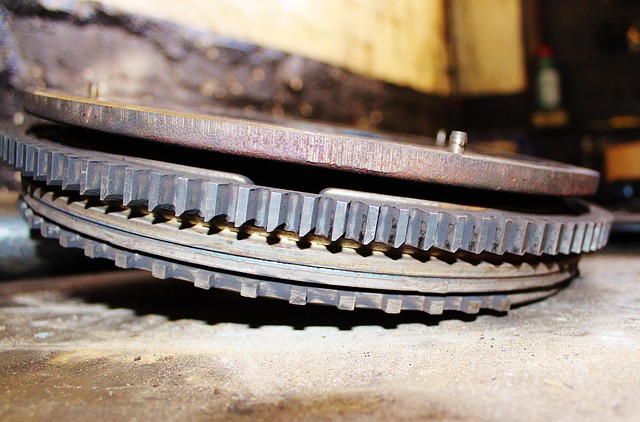
Update Your Hardware With Essential IT Tips for 2025
In an era where technology evolves at a breathtaking pace, the decision to Update your hardware is not merely a matter of staying current—it is a strategic move that safeguards performance, security, and future compatibility. Whether you’re a small business owner, a home user, or an IT professional managing a fleet of devices, the fundamentals of a successful hardware Update remain consistent: evaluate needs, plan meticulously, choose the right components, and maintain a disciplined approach to deployment and support.
Why an Update Matters in 2025
By 2025, several critical trends underscore the importance of a timely Update. First, processor and memory advancements mean that older CPUs struggle with modern software, leading to sluggish performance and increased power consumption. Second, storage technologies such as NVMe SSDs offer orders‑of‑magnitude speed improvements over SATA drives, translating into faster boot times, quicker data retrieval, and smoother multitasking. Third, security threats evolve rapidly; newer hardware often includes built‑in encryption, secure boot, and tamper‑evidence features that older models lack. Finally, compliance regulations are tightening, and many governing bodies now mandate the use of devices that meet minimum hardware standards for data protection.
Planning Your Update Strategy
Effective Update planning starts with a comprehensive audit. Document every device, its age, specifications, and current usage patterns. Identify bottlenecks—whether it’s a CPU that is over‑taxed, a memory module that’s too small, or a storage drive that’s nearing capacity. Map out your business processes or personal workflows to determine which workloads will benefit most from enhanced performance.
- Set clear objectives: Do you need faster rendering, lower latency, or better security?
- Establish a budget: Factor in hardware costs, software licensing, labor for installation, and potential downtime.
- Schedule phased rollouts: Roll out updates in stages to mitigate risk and allow for troubleshooting.
Choosing the Right Components for an Update
When selecting new hardware, compatibility is key. A popular rule of thumb is to align the motherboard with the CPU’s socket type and chipset, ensuring that RAM, GPUs, and storage devices all support the same bandwidth standards.
- Processor: Modern CPUs in 2025 offer powerful integrated graphics and efficient power management. Consider the latest cores that support simultaneous multithreading for improved multitasking.
- Memory: DDR5 RAM is now mainstream, offering higher data rates and lower power consumption. Aim for at least 16 GB per workstation if your tasks involve content creation or virtualization.
- Storage: NVMe drives connected via PCIe 4.0 or 5.0 deliver speeds that dwarf legacy HDDs. For bulk archival, continue to use SATA SSDs or magnetic drives, but keep them separate from active workloads.
- Graphics: Integrated GPUs are sufficient for many business applications, but if you rely on 3D modeling or video editing, dedicated GPUs with ample VRAM are essential.
- Peripherals: USB‑4 and Thunderbolt 4 ports provide versatile connectivity, allowing for high‑speed data transfer and charging capabilities.
Preparing the Software Side of Your Update
A hardware Update is only as effective as the software ecosystem that supports it. Before deploying new components, ensure that your operating system, drivers, and firmware are up to date. Modern operating systems such as Windows 11 and the latest Linux distributions include optimizations for new CPUs and memory technologies, which can unlock performance gains you might otherwise miss.
“Software and hardware must evolve together; an unprepared system can negate the benefits of a fresh Update.”
Installation and Deployment
Hardware installation is a hands‑on process that demands attention to detail. Follow these steps to minimize errors:
- Power off and unplug: Always disconnect the device from the mains and any peripherals before opening the case.
- Static protection: Use an anti‑static wrist strap or work on a non‑conductive surface to protect sensitive components.
- Replace or add components: Carefully remove the old CPU, insert the new one with thermal paste, secure the heatsink, and connect the power cables. Install new memory modules into the appropriate slots, and mount storage drives into the chassis or bay.
- Check connections: Verify that all cables are firmly attached and that no pins or contacts are bent.
- Power up and test: Boot the system and enter the BIOS/UEFI to confirm that the new hardware is recognized. Run diagnostics or stress tests to ensure stability.
Post‑Deployment Maintenance
After a successful Update, regular maintenance ensures longevity and performance. Implement a routine that includes:
- Monitoring temperatures and power consumption to detect overheating or inefficiencies.
- Updating firmware on SSDs, GPUs, and motherboards to patch vulnerabilities.
- Cleaning dust from fans and heatsinks every six months.
- Backing up data on an ongoing basis, using both on‑site and off‑site solutions.
- Re-evaluating system performance every 12 months to decide if another Update cycle is warranted.
Security Implications of a Hardware Update
Hardware is the first line of defense in many security architectures. Newer processors incorporate features such as Intel® SGX and AMD Secure Encrypted Virtualization, which protect data in use. NVMe drives often support hardware encryption engines, reducing the reliance on software encryption and lowering CPU overhead. Additionally, secure boot mechanisms verify the integrity of firmware, preventing malicious code from executing at boot time. By Updating to devices that support these features, organizations can align with best practices and compliance requirements more easily.
Future‑Proofing Your Investment
A thoughtful Update plan looks beyond immediate gains. Consider modular designs that allow for incremental upgrades—such as using a motherboard with multiple PCIe slots or a case that accommodates various drive sizes. Embrace emerging standards like DDR5, PCIe 5.0, and USB‑4, which will remain relevant for several years. Also, plan for software scalability; ensure that your operating system and applications can leverage newer hardware capabilities without requiring additional licensing or significant rewrites.
Conclusion: The Continuous Journey of Update
Hardware Update is not a one‑off event; it is an ongoing cycle of assessment, acquisition, and refinement. By approaching each Update with a clear strategy, a meticulous eye for compatibility, and a commitment to security and maintenance, users can unlock sustained performance, safeguard their data, and position themselves advantageously in the rapidly changing tech landscape of 2025 and beyond. Embrace the process, stay informed, and let each new component bring you one step closer to a more efficient, secure, and resilient computing environment.



